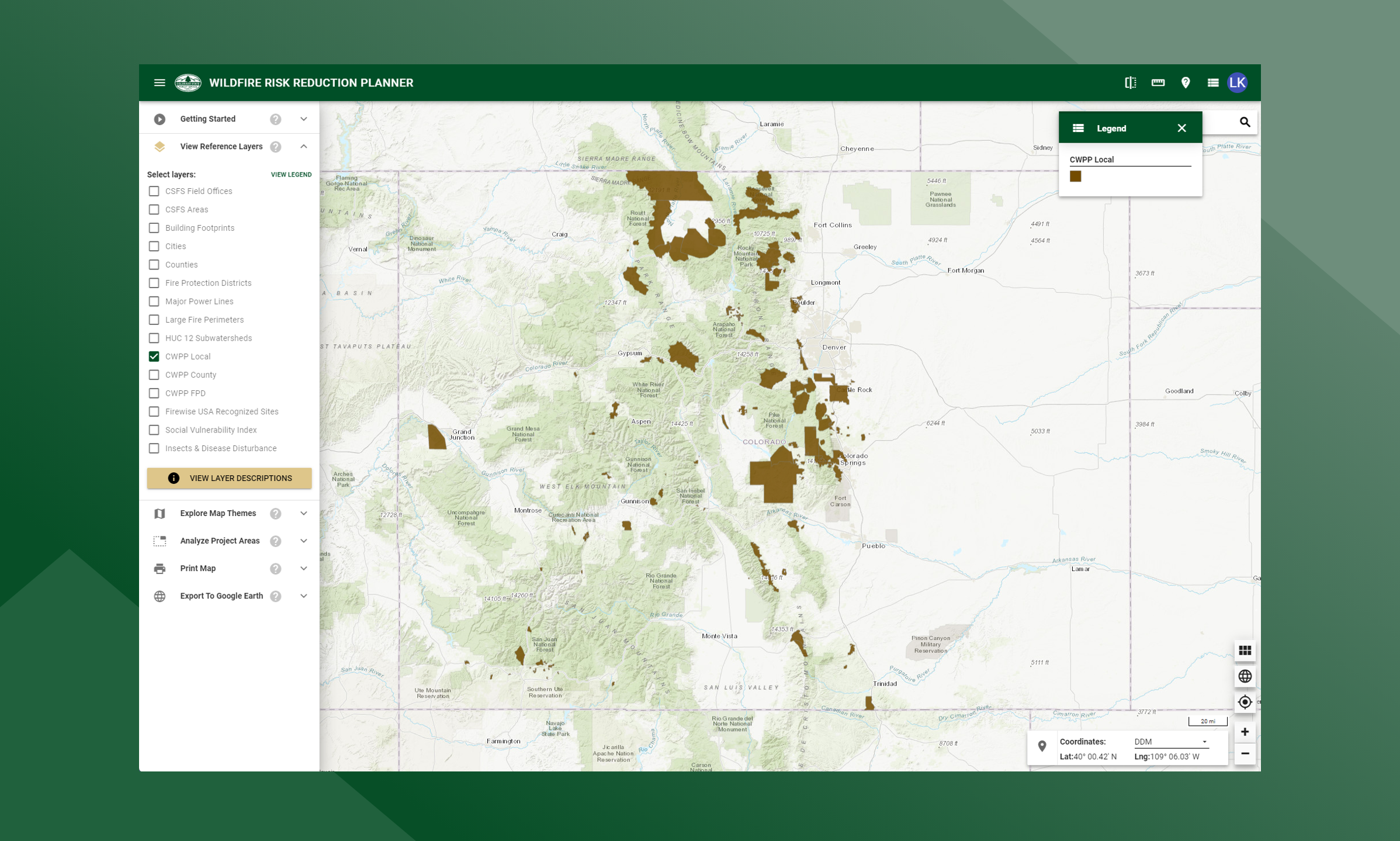CWPP
A Community Wildfire Protection Plan (CWPP) is a document developed and agreed upon by a community to identify how the community will reduce its wildfire risk. CWPPs identify areas where fuel reduction is needed to reduce wildfire threats to communities and critical infrastructure, address protection of homes and other structures, and plan for wildfire response capability. The Colorado State Forest Service (CSFS) supports the development and implementation of CWPPs and provides resources, educational materials and information to those interested in developing CWPPs.
The CWPP dataset represents the boundaries of those areas that have developed a CWPP. Note that CWPPs can be developed by different groups at varying scales, such as county, Fire Protection District (FPD), community, HOA, etc., and as such can overlap. In addition, the CWPPs can be from different dates. Often a county CWPP is completed first with subsequent more detailed CWPPs done for local communities within that county or FPD.
https://csfs.colostate.edu/wildfire-mitigation/community-wildfire-protection-plans/

At a minimum, a CWPP should include:
The wildland-urban interface (WUI) boundary, defined on a map, where people, structures and other community values are most likely to be negatively impacted by wildfire.
The CSFS, local fire authority and local government involvement and any additional stakeholders.
A narrative that identifies the community’s values and fuel hazards
The community’s plan for when a wildfire occurs.
An implementation plan that identifies areas of high priority for fuels treatments.
If your community is in an area at risk from wildfire, now is a good time to start working with neighbors on a CWPP and preparing for future wildfires.
Contact your local CSFS district to learn how to start this process and create a CWPP for your community: http://csfs.colostate.edu/districts/
